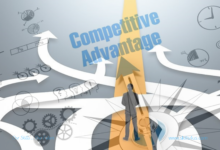
Future Foresight Isn’t Just A Luxury In Good Times; It’s A Necessity For Survival and Continuity At All Times
In today’s business world, many organizations use different strategies to stay ahead of the competition. Despite this, many other organizations ignore future foresight, one of the most critical strategies. Knowing that the benefits and advantages of future foresight are represented in the ability to see beyond the present and the future, and when used correctly, it can provide many other benefits and advantages for business organizations. If the organization is looking to enhance its performance, future foresight may be what it needs, as it has become more than just an academic discipline. Moreover, future foresight is not just a luxury in good times; it is necessary to survive and continue.
The importance of future foresight in organizations
Understanding the world around us and predicting how changes will affect an organization can provide enormous benefits and business opportunities. Through systematic and successful implementation of future foresight, organizations can prepare for change and build strategies to deal with it. Suppose an organization can incorporate future foresight techniques into its day-to-day operations. In that case, it can protect itself from adverse events and give it direction to move forward within its markets.
1. Quick change
Change in technologies, service models, the natural environment, and entire societies is so fast that it’s hard to keep up. Therefore, understanding those rapid changes is not easy but necessary. Because this enables the organization to develop future scenarios that help it face the expectations and challenges it faces. Therefore, future foresight is essential in this complexity while searching for changes in the world.
2. Big data
The world is changing so quickly that organizations sometimes cannot handle it. In addition to the tremendous technological and knowledge development that puts organizations in front of massive data, that makes their future knowledge base very large and speaks at an accelerated rate. Therefore, the organization can deal with and organize this knowledge base through a transparent methodology in shaping the future. Thus the organization can significantly improve the odds of achieving successful future outcomes.
3. The need for innovation
Many organizations rely on innovation to keep moving their business forward and increasing market share. However, to innovate, they must be aware and foresee what their customers want to buy now and in the future. Therefore, they need excellent insight into their customer base. Organizations can change their products to suit future requirements by future foresight and predicting how a product or market might evolve.
Benefits and advantages of future foresight
Because of the challenges mentioned above and many others, future foresight has become more than an academic discipline. The following are some of the benefits and benefits of future foresight in organizations:

1. Promote alignment with the entire organization
In most organizations, a group of people and functions at any given time may be tracking changes across society, technology, economics, the environment, and politics. By future foresight, alignment with the entire organization is strengthened. Thus, the organization can coordinate the collection of data and information from multiple sources and delve into the future on specific topics to ensure that strategic plans and investment decisions are in line with future changes.
2. Increase organizational awareness
By using future foresight, it is possible to increase organizational awareness of future trends and phenomena related to the success of the organization in the future. Thus, decision-makers can chart their path forward in a structured way so that employees are clear about who is in the role within that plan and also prioritize different tasks based on potential outcomes.
3. Proactive vision
Future foresight can help organizations draw comprehensive and contextual maps of key future developments and recognize new opportunities for their competitors. It also provides proactive insight and early warnings about upcoming changes, which ensures leaders an enhanced decision-making framework and allows them to stay competitive in the market by understanding what is happening around them better than others.
4. Flexibility and the ability to anticipate future events
Future foresight is the key to moving beyond conventional thinking to see opportunities for change in a positive light. Knowing that having educated views of future developments put the organization in the position of a natural thought leader. It also makes organizations more flexible and able to anticipate future events, making them more prepared when the time comes to take action on those changes emerging around us.
5. Create a competitive advantage
Future foresight helps the organization become a leader in its field and among its competitors by appearing more creative and thinking about the future. By future foresight, the organization enhances its image with its smooth and flexible transition to new ideas and systematic adaptation to change. Thus, it creates a competitive advantage that leads to increased business success.
Future foresight helps organizations understand and prepare for the future by supporting their leaders in proactive planning and decision-making to influence future growth with more confidence and outstanding reliability.



